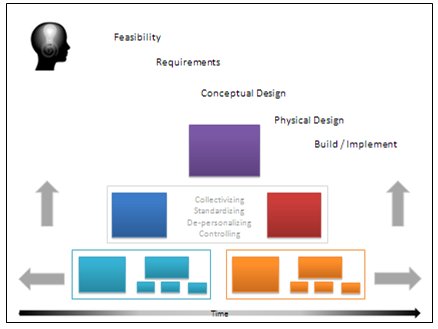|
|
|

|
1. Feasibility Study |
Feasibility studies are done only if we’re not sure that we have the resources or capacity to accomplish the development of a system or expansion of a system.
|
|
2. Requirements Analysis |
Most projects begin with this phase. Generally speaking, the output consists of lists of the following: a. What we must have for a viable system to meet the main objectives b. What would be nice to have in this iteration of system development
c.
Blue sky – in our dreams system |
|
3. Conceptual Design |
This is a
report that verbally describes the vision of the system that
includes the existing system and the new elements of it. It
would incorporate all of a. what we must have; b. some of what
would be nice to have if it can be incorporated without greatly
increasing cost and scope of work; and c. those elements of blue
sky that can be incorporated subject to the same constraints as
b. |
|
4. Physical Design |
This is the
blueprint for the system. It includes the detail specifications
for the work to be done, the schedule for when it is to be done
and by whom it is to be done. |
|
5. Build/Implement |
This is where the main body of work is done. It’s an orchestration of the people, the tasks, the procurement, the testing, and the training. |